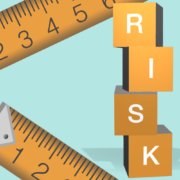Essential steps for a better project risk management
When one starts the planning process for a project, one of the main things (or the main one) of your planning makeup is risk itself. In other words – what could possibly and eventually go wrong? To many of you it may sound as а negative mindset but it is in fact a preventative one. Issues are an integral part of every process, but if you have a strategy in mind to tackle them, risk will be minimized and managed.
But how should you manage risk? It sounds like a paradox to resolve something that has not actually occurred yet, but there are practical steps in this direction.
Risks are potentialities
First of all, let’s specify the core of project risk management. Clearly, it is the process of outlining, analyzing and responding to the risks that arise so that the project remains in track and meets its goal. As we already mentioned, risk management is a preventative strategy, it is not only reactive. Risks are potentialities and when they are not addressed, then they can turn into realities, i.e. into issues. So, we can sum up the idea of project risk management as identifying, analyzing, categorizing and planning for risks, before they become issues.
While it is almost impossible to remove project risk altogether, with careful planning you can undoubtedly manage to avoid risks in some aspects and mitigate disruptions in others. Therefore, risk has to be managed and minimized from the very beginning to the completion of a process, and if possible, it has to be eliminated.
Identify the project risk
Running a risk management workshop is an important aspect of risk management which should be done at the very beginning of the process. This includes a brainstorming session, which gives valuable prospects to all possible risks that may jeopardize the project. A helpful tool which can be used as a matrix or a chart is the so-called risk wheel. It helps you think through the different types of risks in your project. You need to make sure that the risks you are listing are not outliers already or no risks at all.
Analyze the risk
The next essential step is how likely it is for a certain risk to happen. It is not an easy task but there is already a framework for this process. Analyzing risk in a project happens through quantitative and qualitative risk analysis. The risk factor is determined by the way and the extent to which it impacts the project. These include: duration, costs, resources, budget, schedule.
Assess and prioritize risk
You can then assess the risk by putting it into a category: very low, low, medium, high, very high. This is the initial and crucial step to prioritizing project risk. Some risks would need to be addressed immediately and very quickly, others may also require attention, but they might not be threatening for the success of a project. It usually is very discouraging to find out that there are numerous risks, but categorization and prioritization excludes some of them and makes your efforts to tackle risk more focused and efficient.
Address and respond
In this step all the planning you have done and gone through should get implicated. Needless to say, you should begin with the most significant risk. You should answer few questions related to the consequences – or what would happen if the risk materializes. What can you do to tackle the risk and reduce the risk level? What if things start to go wrong? How will you know if a risk materializes or turns into an issue?
Then you create a plan to mitigate it – a strategy that is based on both countermeasures and contingencies.
Monitor and report
Managing project risk is an ongoing, cyclic activity. You should regularly reassess likelihood and seriousness of risk impact. Also, identify and monitor new risks which may arise in the process. Whoever owns the risk, or is responsible for it, has to provide regular updates and accurate picture of the project’s overall progress. Monitoring is successful only when there is enough transparency – everyone in the project should know what is going on and thus be able to contribute to managing the risk and the project in general.
Reporting risks and the measures taken to tackle them will help in addressing the same or similar risks in future.
Finally, although most people think that risks are inherently negative, there are the so-called positive risks too. They serve as opportunities that can affect the project in beneficial ways. And positive risks can quickly turn into negative ones, and vice versa. So, identifying and categorizing the risk is the prerequisite for the success of your approach to tackle it.
Have in mind that he abovementioned steps describe the basic aspects of project management in general. If you need more advanced and professional help for your business projects and processes, you can rely on our LaRA. Latona Risk Analysis System is designed and built as an intelligent platform for enhanced security risk analysis and management in different sectors specializing in the trade of goods across borders.












Leave a Reply
Want to join the discussion?Feel free to contribute!